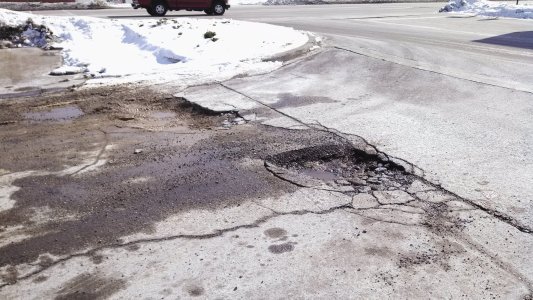Frost heave is a common problem in any country where the temperature drops below 0 degrees Celsius. It’s most commonly known as the cause of potholes that form in roads during winter, costing billions of dollars worth of damage worldwide each year. However, despite this, it is still not well understood. For example, the commonly accepted explanation of how it occurs is that water expands as it freezes, and this expansion tears open the surrounding material. However, if you replace water with a material that does not expand upon freezing, similar damage occurs.
Oxford Mathematician Rob Style and colleagues have looked at this problem and come up with an alternative explanation. In their research, published in the Journal of Physical Chemistry, they carried out experiments on a model particle/water system designed to establish the dominant factors that cause frost heave, and then compared the results to existing theories. They found that the cooling rate and how well packed the particles are initially make big differences to the amount of heave that occurs. The latter in particular is normally overlooked when predicting heave rates.
These findings will be important in tackling ice segregation occurring in a wide range of situations, not only in model laboratory experiments and theories but to wider geological and industrial processes that affect us all, such as frozen food production and, of course, those potholes in the road.


